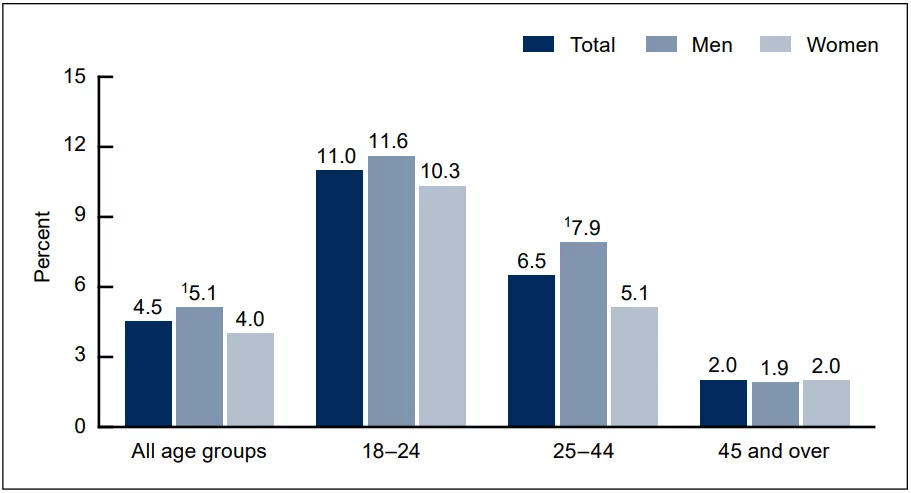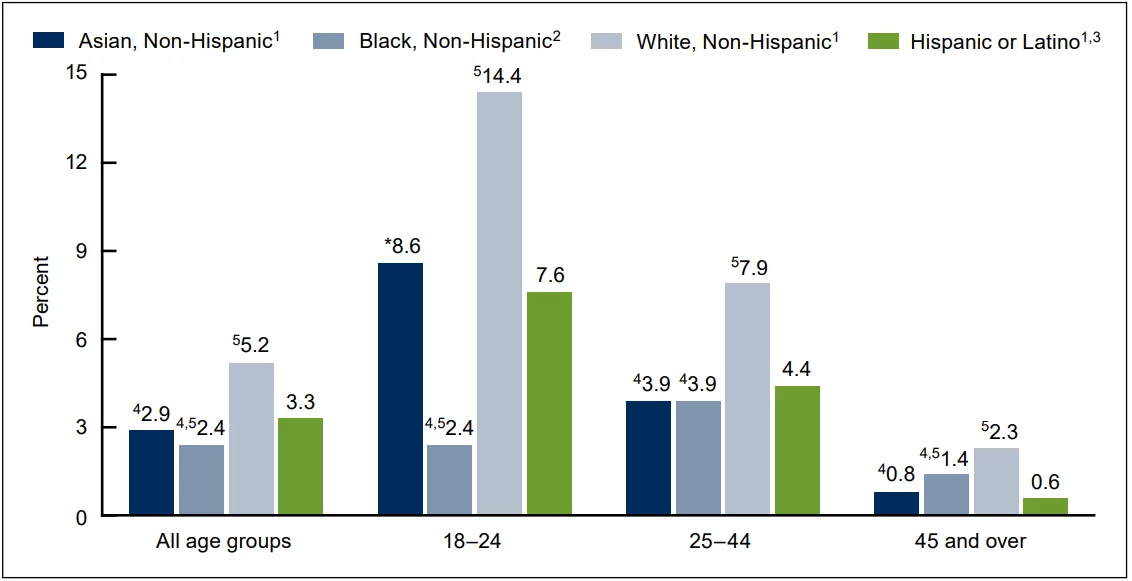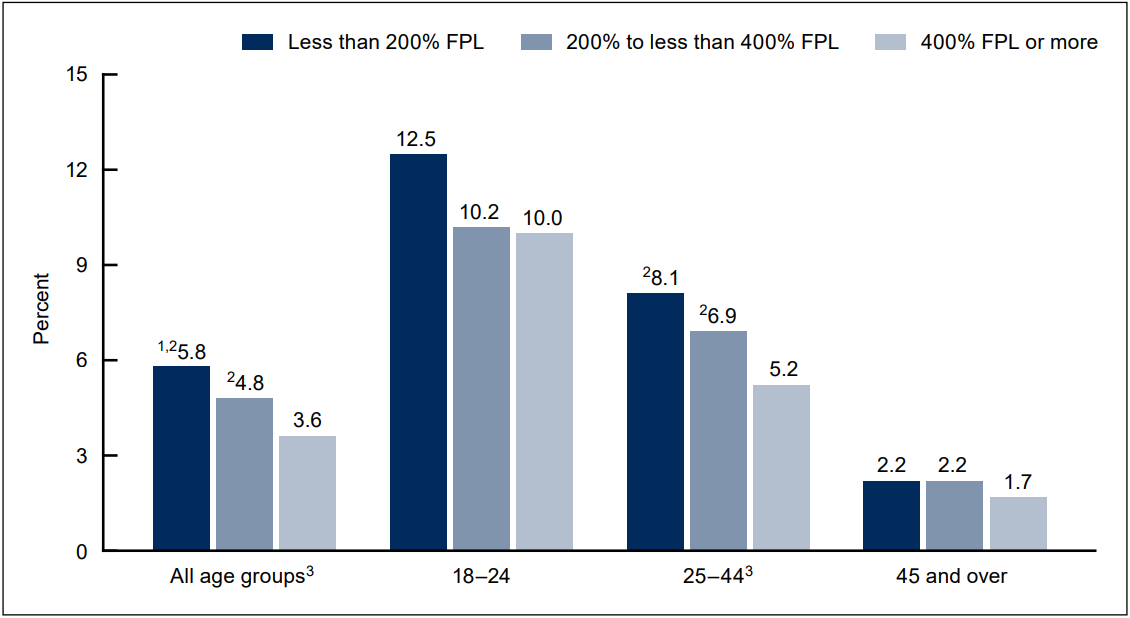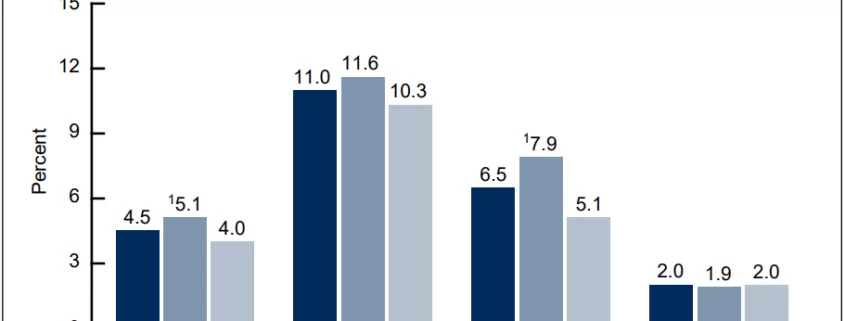E-Cigarettes Among Adults: About 1 in 10 Are Vaping Regularly
In a recent study conducted by the Centers for Disease Control and Prevention (CDC), it was discovered that more than 1 in 10 Americans aged 18 to 24 are using e-cigarettes regularly.
The use of electronic cigarettes has been on the rise among some adults in recent years. While they have the potential to benefit smokers who are not pregnant if used as a substitute for regular cigarettes or other tobacco products, concerns about dual use with traditional cigarettes remain. Moreover, the increasing use of e-cigarettes among young adults raises worries due to the adverse effects of nicotine on brain development during early adulthood. This article delves into the findings from the 2021 National Health Interview Survey, providing insights into the prevalence of e-cigarette use among adults based on sociodemographic characteristics, family income, and the worrisome trend of dual use.
Key Findings from the National Health Interview Survey
Data from the National Health Interview Survey revealed some interesting patterns regarding e-cigarette use among adults in 2021:
- Prevalence of E-Cigarette Use: Approximately 4.5% of adults aged 18 and over were current e-cigarette users, with the highest prevalence observed among adults aged 18–24, reaching 11.0%.
- Variation by Race and Hispanic Origin: The percentage of White non-Hispanic adults using e-cigarettes (5.2%) was higher than that of Asian non-Hispanic (2.9%), Black or African American non-Hispanic (2.4%), and Hispanic or Latino (3.3%) adults.
- Influence of Family Income: E-cigarette use generally declined with increasing family income among adults aged 18 and over.
- Age Group Differences: Adults aged 18–24 and 25–44 were more likely to be dual users of e-cigarettes and cigarettes compared to those aged 45 and over.
- Age as a Factor: Current e-cigarette use decreased with increasing age for both men and women, and there were variations in usage among different race and Hispanic-origin groups.

E-Cigarette Use Among Young Adults
In 2021, young adults aged 18–24 showed the highest prevalence of e-cigarette use. Interestingly, gender differences were less significant in this age group compared to others. Among adults aged 18 and over, approximately 4.5% were current e-cigarette users, with men having slightly higher rates (5.1%) than women (4.0%). However, the difference between men (11.6%) and women (10.3%) in the 18–24 age group was not statistically significant.
Among adults aged 25–44, the prevalence of e-cigarette use was higher among men (7.9%) compared to women (5.1%). In contrast, e-cigarette use was lower among adults aged 45 and over, with usage being similar for men (1.9%) and women (2.0%). Notably, e-cigarette use decreased with age for both genders.
Sociodemographic Differences in E-Cigarette Use
Race and Hispanic origin played a role in the prevalence of e-cigarette use. White non-Hispanic (subsequently, White) adults had a higher likelihood of being current e-cigarette users (5.2%) compared to Asian non-Hispanic (subsequently, Asian; 2.9%), Black or African American non-Hispanic (subsequently, Black; 2.4%), and Hispanic or Latino (3.3%) adults.
The differences were more pronounced when comparing White adults with other race and Hispanic-origin groups within specific age categories. For instance, among adults aged 18–24, e-cigarette use for White adults was higher than for Black and Hispanic or Latino adults. Additionally, e-cigarette use declined with age for Asian, Hispanic or Latino, and White adults, while Black adults aged 45 and over showed lower usage compared to those aged 25–44, but not significantly different from adults aged 18–24.

Influence of Family Income on E-Cigarette Use
The percentage of adults using e-cigarettes generally decreased as family income increased. Among adults aged 18 and over, those with family incomes of less than 200% of the federal poverty level (FPL) (5.8%) were more likely to be e-cigarette users than those with family incomes ranging from 200% to less than 400% of FPL (4.8%) and those with family incomes of 400% FPL or more (3.6%).
Among adults aged 18–24, the observed difference in e-cigarette use between those with family incomes of less than 200% FPL (12.5%) and those with higher family incomes was not significant. However, among adults aged 25–44, usage decreased with increasing family income, ranging from 8.1% to 5.2%. Usage rates were similar among adults aged 45 and over across different family income levels.

Dual Use of E-Cigarettes and Cigarettes
Dual use of e-cigarettes and cigarettes is a health concern due to potential exposure to more toxins and adverse respiratory outcomes. In 2021, 1.3% of all adults aged 18 and over used both cigarettes and e-cigarettes, while 10.2% exclusively smoked cigarettes and 3.2% solely used e-cigarettes.
Among young adults aged 18–24, the percentage of e-cigarette-only users (9.2%) was higher compared to those who only smoked cigarettes (3.6%) or used both cigarettes and e-cigarettes (1.8%). Among adults aged 25–44 and 45 and over, cigarette smoking only was more prevalent (10.6% and 11.4%, respectively) compared to e-cigarette use only or both.
Interestingly, adults aged 18–24 were less likely to smoke cigarettes only but more likely to use e-cigarettes only. Dual use was similar between adults aged 18–24 and 25–44 and higher in both groups compared to adults aged 45 and over (0.8%).

Summary
In conclusion, e-cigarette use among adults in 2021 was prevalent, especially among young adults aged 18–24. Men had higher usage rates overall and among adults aged 25–44. White adults and those with lower family incomes showed higher e-cigarette usage. Additionally, dual use of e-cigarettes and cigarettes remained a concern, even among young adults who had never smoked cigarettes before.
To address the potential risks associated with e-cigarettes, public health efforts should focus on educating young adults about the dangers of nicotine on brain development and promoting smoking cessation programs. Furthermore, policies and regulations need to be in place to monitor and reduce e-cigarette use, particularly among vulnerable populations.
- Cambodia: Phnom Penh Bans Smoking & Vaping on “Walk Street” - August 16, 2025
- Mexico City Congress Approves Ban on Vapes & E-Cigs - August 16, 2025
- Is It Illegal to Vape or Smoke While Driving in Minnesota? - August 15, 2025









